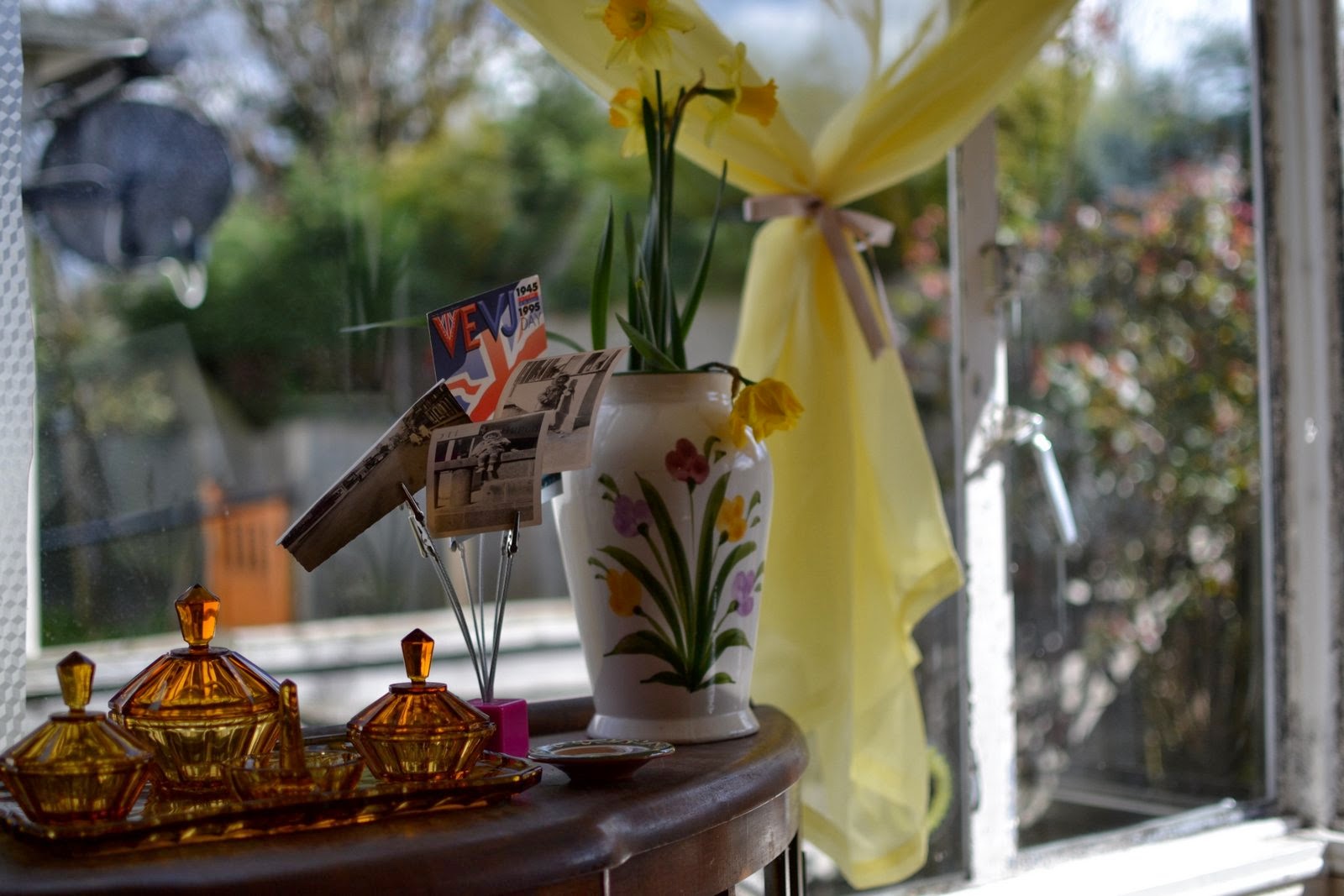On Saturday, after another manic week at work (fingers crossed it calms down soon), we took a well-deserved little break from house renovations to visit the Excalibur Estate in Catford to see its lovely prefab houses. It is one of the UK's last remaining prefab communities and the biggest one in Europe!

We had heard there was a pop-up museum about the history of the estate and prefab architecture so we went to see what it was all about. The museum is curated by French photographer Elizabeth Blanchett who has travelled around Britain photographing and learning about prefabs. The museum, which is housed in one of the prefab houses (Number 17), features lots of her photos of residents of prefab communities all over the UK.

Up until 2013, the house was lived in by an old lady. There are still lots of reminders of her all over the house. Apart from a few modernisations, the decor and the house are as they would have been in the 1940s when the prefabs were built.
We had a nice cup of tea and a look around.


The Excalibur Estate is home to 187 prefab houses and apparently gets its name from the fact that the streets are named after characters from the legend of King Arthur.

Each house is set on a little plot of its own land and has its own front garden and private entrance. They all have two bedrooms, a sitting room, a kitchen and a small bathroom. With sun streaming in through the windows we thought they'd be very nice indeed to live in.
The flags showed all the places in the UK where prefab communities were built after WW2.

It seems such a shame to demolish something which has such historical significance, and which reminds us of what life in those post-war years must have been like. We had a lovely time, wandering along the alleys running along the houses, listening to the birds and marvelling at how peaceful if felt. Like a little slice of time gone by.
The museum is open until the end of May.










No comments:
Post a Comment